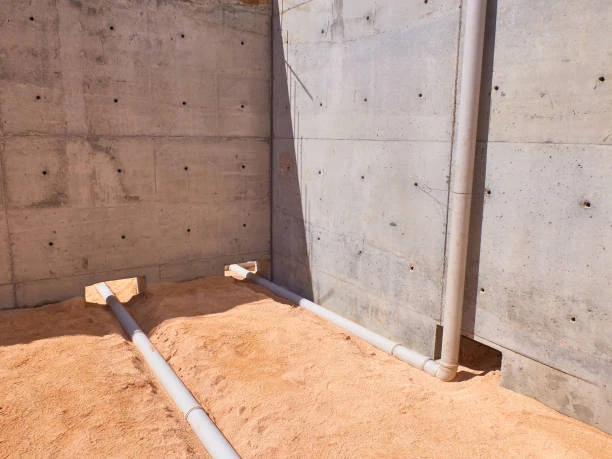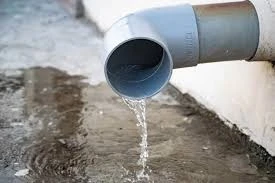Introduction
Plastic pollution is one of the most pressing environmental issues of our time. A lesser-known but significant contributor to this crisis is the wear and tear of feed pipes. These pipes, commonly used in industries such as agriculture, water treatment, and oil and gas, are often made from plastic materials. As they age and degrade, small plastic particles are released into the environment, eventually making their way to the sea. In this article, we explore how feed pipe wear is contributing to ocean plastic pollution and the urgent need for sustainable solutions.
The Role of Feed Pipe in Various Industries
Feed pipes are essential components in many industries. They transport fluids such as water, oil, chemicals, and feed materials to various systems and processes. In agriculture, for example, feed pipes are used to deliver water or liquid fertilizers to crops. In the oil and gas industry, these pipes transport crude oil, gas, or other substances under high pressure.
Typically, feed pipes are made from durable materials like plastic, which offer benefits such as flexibility, resistance to corrosion, and cost-effectiveness. However, over time, even the most robust plastic pipes begin to degrade. This degradation can result in the release of microplastics into the environment, where they ultimately contribute to plastic pollution in our oceans.
How Feed Pipe Wear Contributes to Ocean Plastic Pollution
The process of feed pipe wear occurs gradually. As pipes are exposed to harsh conditions—such as pressure, friction, and environmental stress—their surfaces begin to break down. In some cases, the degradation leads to the release of small plastic particles into the surrounding environment. These particles, known as microplastics, are tiny enough to pass through filtration systems and other barriers. They can end up in rivers, lakes, and oceans, where they pose a significant threat to marine life.
Microplastics from feed pipes can enter the ocean in several ways:
- Direct leakage: Over time, worn-out feed pipes may develop cracks or holes, releasing microplastics directly into the environment.
- Sediment displacement: In some cases, plastic particles from damaged feed pipes can be carried away by wind or water and settle in nearby sediments, eventually making their way to the ocean.
- Chemical degradation: Exposure to chemicals and environmental factors can cause the plastic material in feed pipes to break down into smaller particles, further contributing to ocean plastic pollution.
The Feed Pipe Environmental Impact of Microplastics
Microplastics have a wide-reaching and damaging impact on the environment. These tiny plastic particles are often ingested by marine organisms, including fish, seabirds, and plankton. Once consumed, microplastics can enter the food chain, affecting species at all levels. The long-term effects of ingesting microplastics are still being studied, but evidence suggests that they can cause physical harm, such as internal injury, and disrupt the hormonal systems of marine organisms.
Microplastics can also accumulate in marine ecosystems, leading to the formation of plastic debris patches, known as “plastic gyres.” These floating islands of plastic waste not only harm marine life but also affect the broader ocean ecosystem. As feed pipe wear continues, more microplastics are released into the water, exacerbating the growing problem of ocean pollution.
The Scale of the Feed Pipe Problem
The amount of plastic pollution entering the oceans each year is staggering. According to a report by the United Nations, approximately 8 million metric tonnes of plastic waste end up in the ocean every year. While the wear of feed pipes is only a small part of this overall problem, it still contributes to the cumulative amount of plastic in the environment.
In the agricultural sector alone, millions of kilometers of feed pipes are used to transport water, fertilizers, and pesticides. As these pipes age, the potential for microplastic leakage increases. In industries such as oil and gas, the volume of feed pipes is even greater, making the problem of plastic pollution even more significant.

Efforts to Reduce Plastic Pollution from Feed Pipe
Addressing the issue of plastic pollution from feed pipes requires a multi-faceted approach. Several key strategies can help mitigate the impact of pipe wear and reduce the release of microplastics into the environment:
1. Using More Sustainable Materials
One of the most effective ways to reduce plastic pollution from feed pipes is to use alternative materials that are less prone to degradation. Materials like stainless steel, composite pipes, or biodegradable plastics can be used instead of conventional plastic. These materials are more durable and less likely to break down into microplastics over time.
For example, composite pipes made from materials like fiberglass and epoxy resins are increasingly being used in various industries due to their strength, corrosion resistance, and minimal environmental impact. Similarly, the use of biodegradable plastics in agricultural feed pipes could help prevent plastic waste from entering the environment.
2. Regular Maintenance and Monitoring
Routine maintenance and monitoring of feed pipes are essential to identify wear and tear before it becomes a major issue. Regular inspections can detect cracks, leaks, or signs of degradation that could lead to the release of microplastics. By addressing these issues early on, industries can reduce the risk of plastic pollution.
Moreover, the installation of more advanced filtration and containment systems can help prevent microplastics from escaping into the environment. In some cases, these systems can capture plastic particles before they enter water systems or oceans.
3. Recycling and Repurposing Plastic Pipes
Another approach to addressing plastic waste from feed pipes is recycling. By reprocessing used pipes into new products, industries can reduce the amount of plastic waste that ends up in landfills or the ocean. Companies are increasingly exploring ways to recycle plastic pipes into construction materials, new pipes, or other reusable products.
Repurposing plastic pipes into non-polluting products is also a promising solution. For instance, used plastic pipes can be used in the production of road surfaces, paving materials, or insulation.
4. Government Regulations and Industry Standards
Governments and regulatory bodies can play a crucial role in reducing plastic pollution from feed pipes. By implementing stricter standards for the use of durable, recyclable, and non-toxic materials, they can encourage industries to adopt more sustainable practices. Policies that promote the use of biodegradable plastics and require regular monitoring of pipe conditions can also help reduce the release of microplastics into the environment.
5. Public Awareness and Education
Raising awareness about the issue of plastic pollution from feed pipes is essential for driving change. By educating the public, businesses, and industries about the environmental impact of plastic waste, we can create more sustainable practices. Public awareness campaigns can also encourage individuals and companies to reduce their use of plastic materials and support alternative solutions.
The Future of Feed Pipe Systems
The future of feed pipes and their role in plastic pollution will depend largely on continued innovation in material science, regulation, and sustainability practices. As industries and governments work together to reduce plastic waste, we can expect to see more sustainable materials and technologies being adopted in feed pipe systems.
Advancements in biodegradable plastics, more efficient recycling methods, and the widespread adoption of alternative materials will help reduce the environmental impact of feed pipe wear. Ultimately, a more sustainable approach to feed pipes can help reduce the amount of plastic that ends up in the ocean, protecting marine life and the planet.
Conclusion
The wear of feed pipes is contributing to a growing problem of plastic pollution in the oceans. As plastic materials degrade, they release microplastics that harm marine life and ecosystems. While the issue is complex, solutions such as using sustainable materials, regular pipe maintenance, and recycling can help mitigate the impact. By taking proactive steps to reduce plastic pollution from feed pipes, industries and governments can protect the environment and create a more sustainable future for generations to come.
Frequently Asked Questions (FAQ)
1. How does feed pipe wear contribute to plastic pollution?
Wear and tear on feed pipes causes them to release microplastics into the environment, which can end up in rivers and oceans.
2. What industries use feed pipes that contribute to plastic pollution?
Industries like agriculture, oil and gas, water treatment, and food production use feed pipes that can contribute to plastic pollution.
3. What materials can replace plastic in feed pipes?
Alternative materials include composite pipes, stainless steel, and biodegradable plastics, which are less likely to degrade into microplastics.
4. How can industries reduce plastic pollution from feed pipes?
Industries can reduce pollution by maintaining and monitoring pipes, using sustainable materials, and recycling plastic pipes.
5. What can individuals do to help reduce plastic pollution from feed pipes?
Individuals can support eco-friendly practices, reduce plastic use, and encourage industries to adopt sustainable materials and technologies.

















